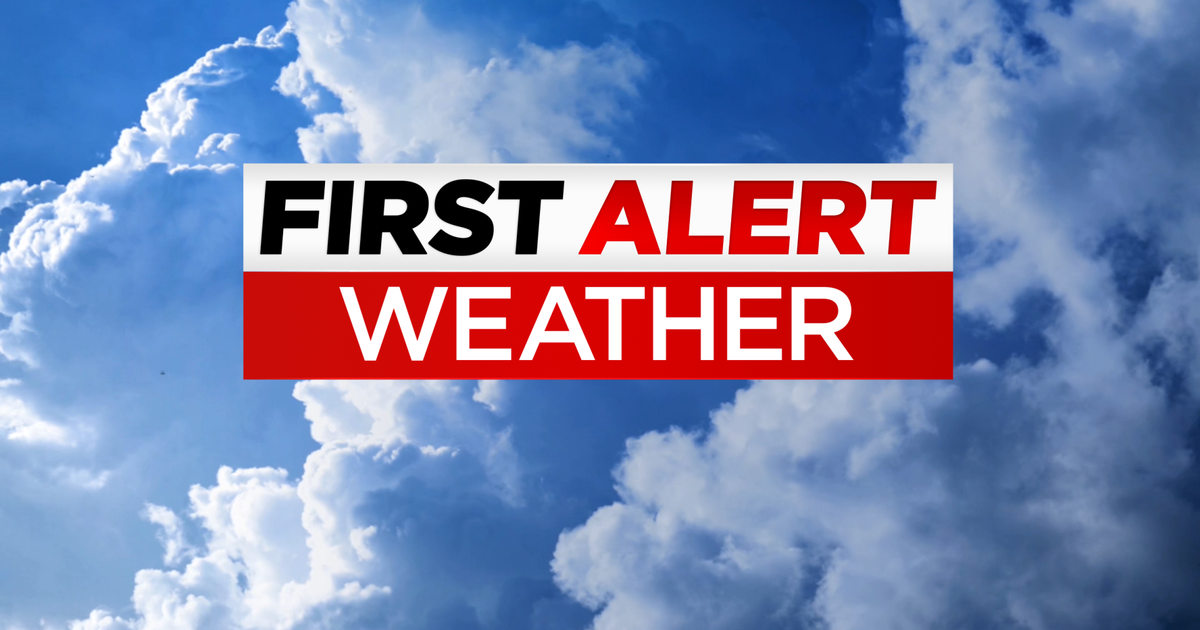World
An Exhibition of Travel Posters Traces the Rise of New York

If New York City Tourism is in need of inspiration, it would do well to stop by Poster House. A new exhibition at the Chelsea museum, “Wonder City of the World: New York City Travel Posters,” shows how the city’s image has been made and marketed over the past 120 years.
Today, New York is best-known as “The Big Apple” or “The City That Never Sleeps,” but an earlier sobriquet was “Wonder City,” as deployed in the show’s title. Coined by marketers in the final decades of the 19th century, it aptly described a city that had shot miraculously skyward following the completion of the Erie Canal. Other nicknames, such as “American Cosmopolis” or “The Foremost City in the World,” never quite caught on.
D.N.A., New York/Anchor Line (ca. 1910). Courtesy Poster House.
The attraction of the city itself may seem eternal and obvious, but as mid-19th-century railway advertisements make clear, New York was once seen more as a gateway to the Hudson Valley. This included the towns of Ballston Spa, Sharon Springs, and Saratoga Springs, which by the 1870s was the leading recuperative (and gambling) destination of choice for the country’s elite.

Joseph Pennell, That Liberty Shall Not Perish from the Earth (1918). Courtesy Poster House.
Major landmarks erected at the turn of the century shifted the focus. First, there was the Brooklyn Bridge, opened in 1883, when it was the world’s longest suspension bridge. Then came the Statue of Liberty in 1886, which was briefly America’s tallest structure. Third came an electrified subway in 1904.
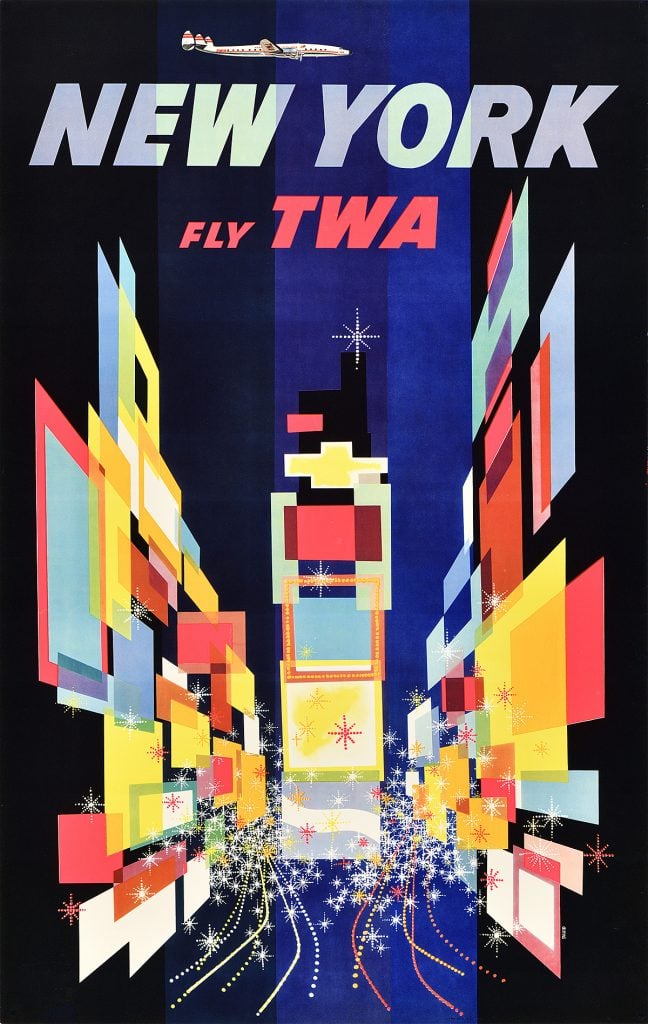
David Klein, New York/TWA (1956). Courtesy Poster House.
These architectural marvels dominated cruise ship advertisements, encouraging Europeans to travel from the Old World to the New. An Anchor Lines poster from 1910 shows New York’s downtown golden early morning light with a ship passing the Statue of Liberty. Similarly, a naturalistic effort from French Lines in 1920 captures the scale of the city, with the likes of the Singer Building and the Woolworth Building peeking above the SS France.
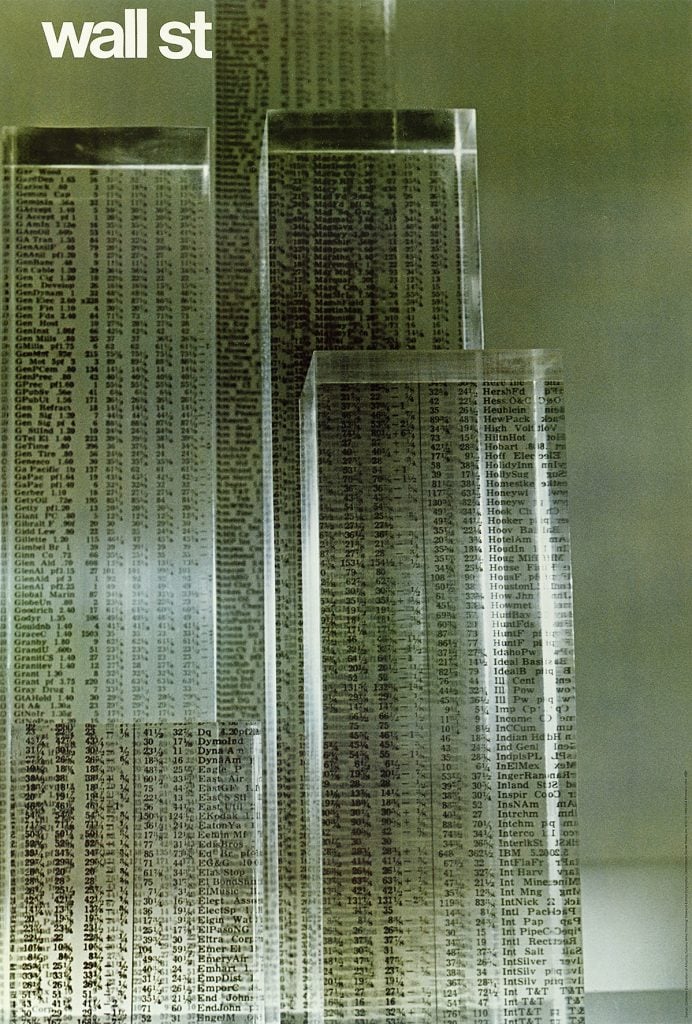
Tomoko Miho, Wall St. (1968). Courtesy Poster House.
In the time between these posters, the First World War took place and New York’s icons became stand-ins symbolizing the nation. The city’s backdrop was now blackened and used to cajole patriots to buy “war savings stamps.”

Designer unknown, War Savings Stamps (1918). Courtesy Poster House.
Bleaker still was Joseph Pennell’s 1918 scene of New York aflame with German bombers above and u-boats below. Lady Liberty is decapitated, and text at the poster’s bottom reads “That Liberty Shall Not Perish From The Earth.” Originally, Pennell had penned a blunter, less poetic refrain: “Buy Liberty Bonds Or You Will See This.”
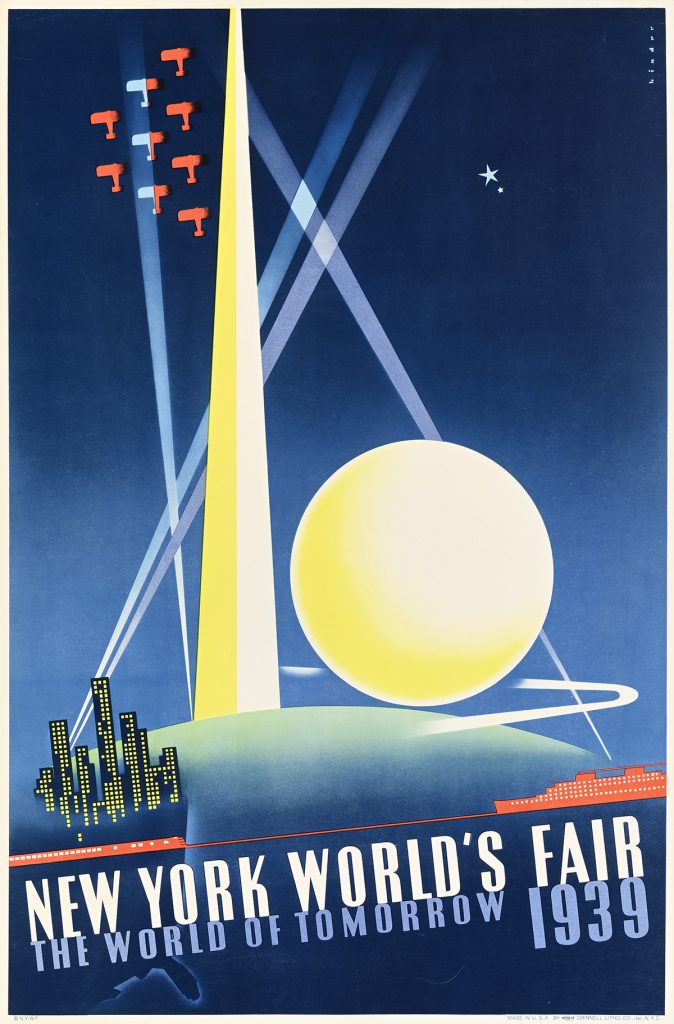
Joseph Binder, New York World’s Fair: The World of Tomorrow (1939). Courtesy Poster House.
By the late 1940s, sea travel was slowly giving way to air. Accordingly, the city’s scale was presented from on high, as in TWA’s 1947 poster by Frank Soltesz, which shows the pink promise of the metropolis far below. The city also begins to be fragmented, its icons layered on top of each other, such as with Swiss Air’s “Over Night To The USA,” which smashes together Rockefeller Center, the Manhattan Bridge, and the downtown skyline. Many adopt a Star-Spangled Banner color theme.
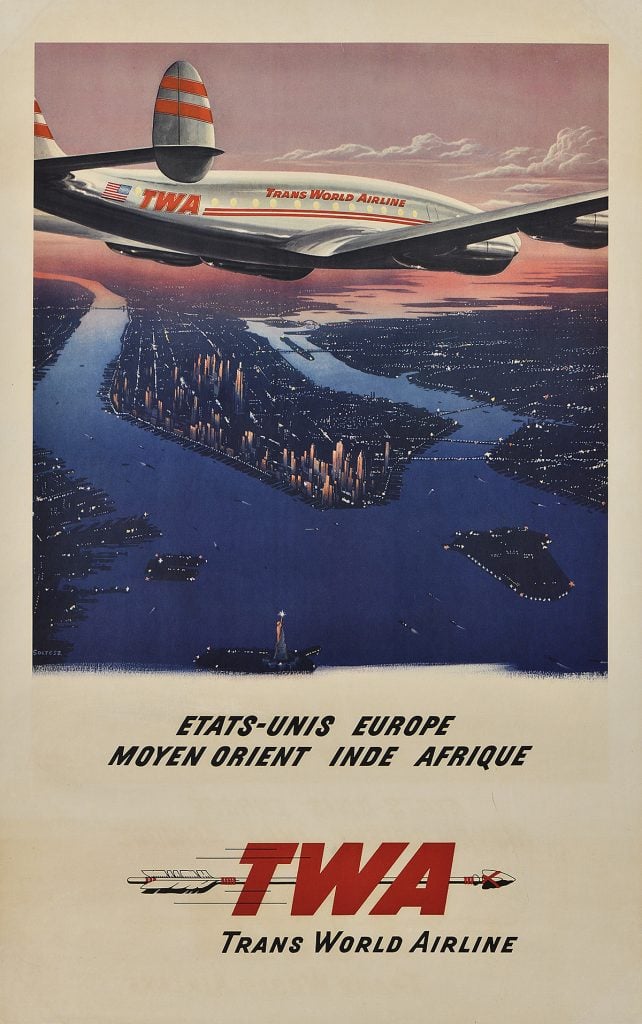
Frank Soltesz, TWA/Etats-Unis (c. 1947). Courtesy Poster House.
The city abstracts further with the approach of the 1960s. Most notable are the color block images made by David Klein for TWA. Six are on show here, though not all were used. Lady Liberty features prominently, sometimes illuminating the names of the city’s landmarks, other times standing alongside similar icons.
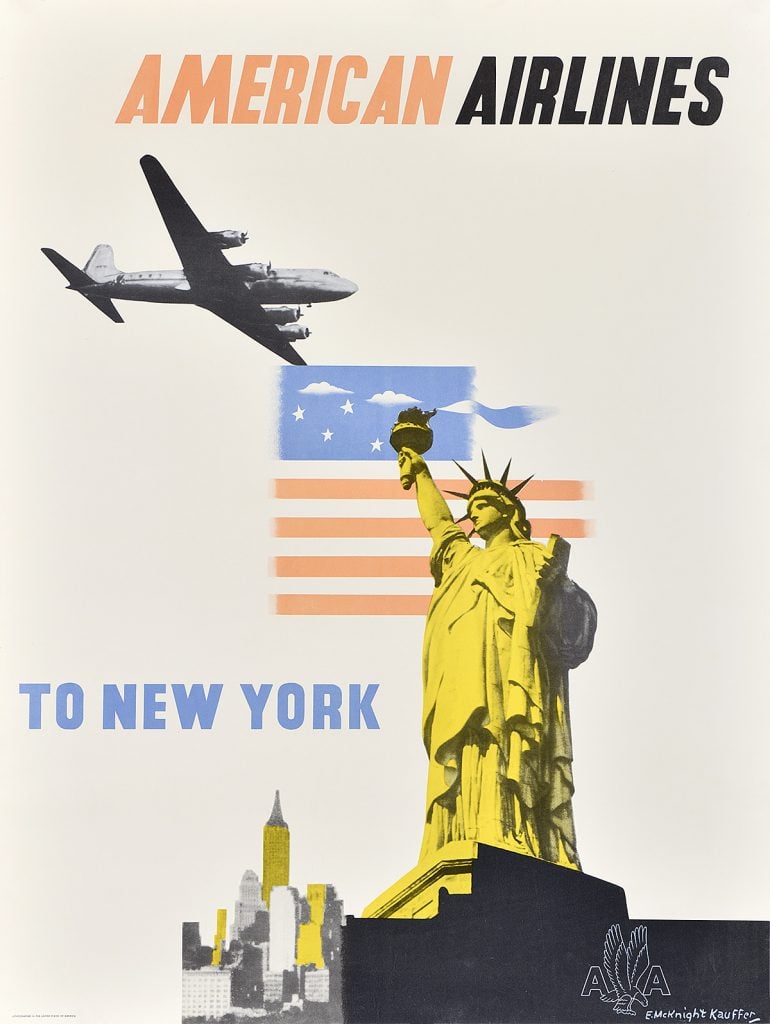
Edward McKnight Kauffer, American Airlines to New York (c. 1948). Courtesy Poster House.
Klein’s work also shows the turn to celebrate New York’s nightlife, most vividly through depictions of Times Square, one of which is now in the Museum of Modern Art‘s collection. Accompanying nocturnal New York is the city’s sexy side, as shown in Pan Am’s collage poster cut from magazines, which shows young men and women living the good life.
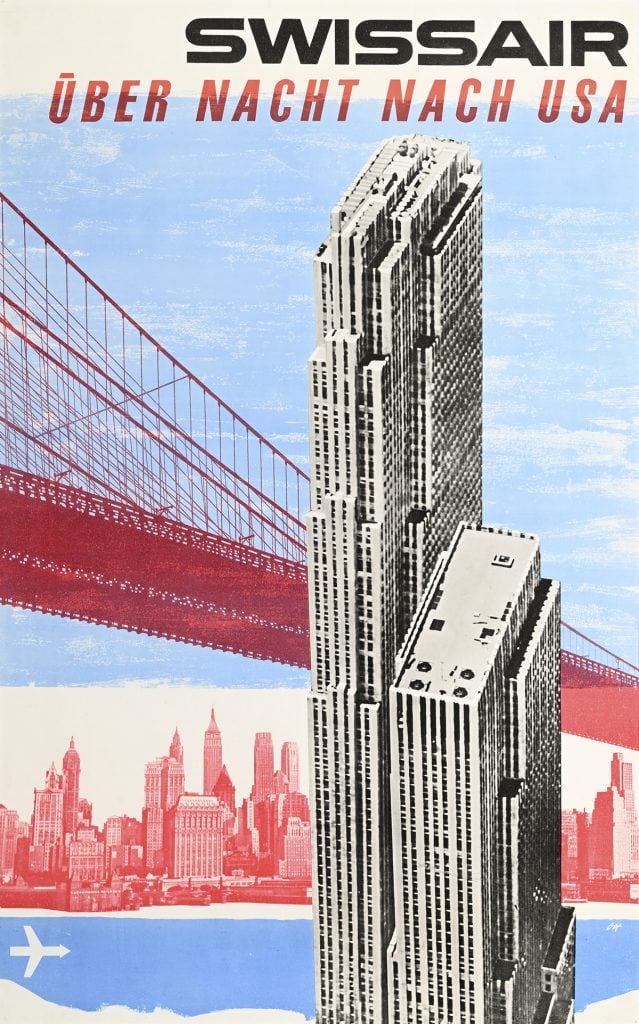
Henri Ott, Swissair/USA (1949). Courtesy Poster House.
The exhibition closes with a group of Japanese-American designer Tomoko Miho’s minimalist posters from the late 1960s, which refigure New York’s landmarks. There’s a Verazzano Bridge shrouded in red fog and a Wall Street megalith made of blocks of glass marked with stock price listings, images so contemporary they might seem new.
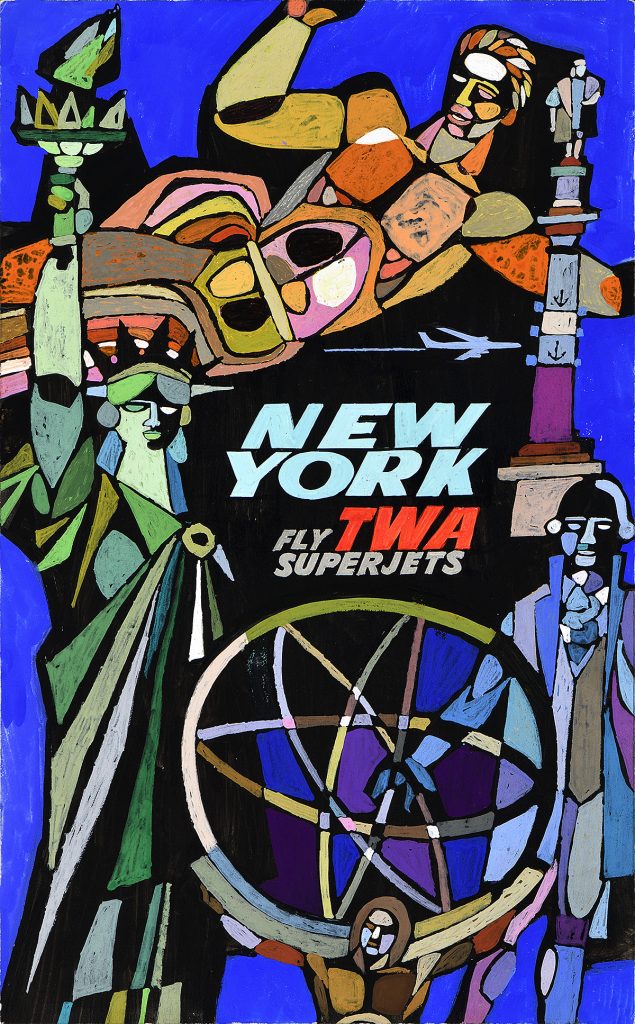
David Klein, TWA Superjets (c. 1960). Courtesy Poster House.

Peter Teubner, Harlem (1968). Photo: courtesy Poster House.
“Wonder City of the World: New York City Travel Posters” is on view at Poster House, 119 W 23rd St, New York, through September 8.
Follow Artnet News on Facebook:




